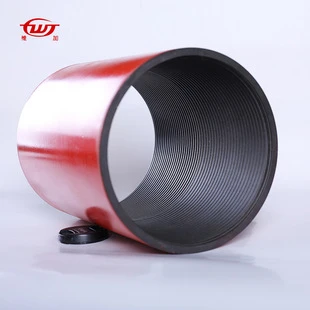- Afrikaans
- Albanian
- Amharic
- Arabic
- Armenian
- Azerbaijani
- Basque
- Belarusian
- Bengali
- Bosnian
- Bulgarian
- Catalan
- Cebuano
- Corsican
- Croatian
- Czech
- Danish
- Dutch
- English
- Esperanto
- Estonian
- Finnish
- French
- Frisian
- Galician
- Georgian
- German
- Greek
- Gujarati
- Haitian Creole
- hausa
- hawaiian
- Hebrew
- Hindi
- Miao
- Hungarian
- Icelandic
- igbo
- Indonesian
- irish
- Italian
- Japanese
- Javanese
- Kannada
- kazakh
- Khmer
- Rwandese
- Korean
- Kurdish
- Kyrgyz
- Lao
- Latin
- Latvian
- Lithuanian
- Luxembourgish
- Macedonian
- Malgashi
- Malay
- Malayalam
- Maltese
- Maori
- Marathi
- Mongolian
- Myanmar
- Nepali
- Norwegian
- Norwegian
- Occitan
- Pashto
- Persian
- Polish
- Portuguese
- Punjabi
- Romanian
- Russian
- Samoan
- Scottish Gaelic
- Serbian
- Sesotho
- Shona
- Sindhi
- Sinhala
- Slovak
- Slovenian
- Somali
- Spanish
- Sundanese
- Swahili
- Swedish
- Tagalog
- Tajik
- Tamil
- Tatar
- Telugu
- Thai
- Turkish
- Turkmen
- Ukrainian
- Urdu
- Uighur
- Uzbek
- Vietnamese
- Welsh
- Bantu
- Yiddish
- Yoruba
- Zulu
casing collar
Understanding Casing Collars in the Oil and Gas Industry
Casing collars are critical components of casing systems used in the oil and gas industry. These collars play an essential role in the structural integrity of wellbores, ensuring that they can withstand the harsh conditions encountered during drilling and production. This article aims to provide an overview of casing collars, their functions, types, and significance in drilling operations.
What is a Casing Collar?
A casing collar is a reinforced section of casing pipe that serves as a connection point and provides a means for securing additional equipment or connecting casing strings. Usually positioned at regular intervals along the length of the casing string, casing collars feature a larger diameter than the casing itself, providing strength and helping to make connections between different lengths of casing pipe. They may also have specific grooves or features to accommodate tools such as packers or hangers.
Functions of Casing Collars
1. Structural Support Casing collars provide crucial structural support to the wellbore. They help distribute loads and minimize the risk of collapse by enhancing the tensile strength of the casing string.
2. Connection Points Casing collars facilitate the connection of different casing sections, making it easier for operators to create a continuous and robust casing string that can reach the desired depth.
3. Installation of Equipment Many specialized tools and equipment can be attached to casing collars, such as packers, which help to isolate different sections of the wellbore or control fluid flow. This flexibility is vital for the operational efficiency of oil and gas extraction.
4. Identification and Tracking Casing collars often feature identification markings, which play a significant role during drilling and production operations. These markings help drillers track the depth and arrangement of the casing string, ensuring accurate placement and maintenance.
casing collar

Types of Casing Collars
Casing collars come in various types, each designed for specific applications and conditions. Some common types include
1. Standard Collars These are used for general applications where basic strength and support are required without the need for additional features.
2. Threaded Collars These collars have male and female threads, allowing for easy connection with other casing sections. They are common in operations requiring quick assembly and disassembly.
3. Welded Collars Welded collars are permanently attached to the casing string, providing a robust connection that is ideal for high-pressure environments.
4. Specialized Collars These include collars designed for specific applications, such as those that accommodate added features like built-in integral packers or advanced communication systems.
Importance of Casing Collars
The significance of casing collars in oil and gas drilling cannot be overstated. They enhance not only the safety of the wellbore but also the efficiency of the drilling process. Proper selection and installation of casing collars contribute to overall well integrity, reducing the risk of potential blowouts or leaks. They ensure that oil and gas can be extracted efficiently and safely, meeting the demands of a growing energy market.
In conclusion, casing collars are vital components of the oil and gas industry that enhance the integrity and efficiency of drilling operations. Understanding their functions and types allows operators to make informed decisions about well construction and maintenance. As the energy landscape continues to evolve, the importance of innovative and reliable casing solutions will remain paramount in ensuring the safety and efficiency of oil and gas extraction processes.
-
Tubing Pup Joints: Essential Components for Oil and Gas OperationsNewsJul.10,2025
-
Pup Joints: Essential Components for Reliable Drilling OperationsNewsJul.10,2025
-
Pipe Couplings: Connecting Your World EfficientlyNewsJul.10,2025
-
Mastering Oilfield Operations with Quality Tubing and CasingNewsJul.10,2025
-
High-Quality Casing Couplings for Every NeedNewsJul.10,2025
-
Boost Your Drilling Efficiency with Premium Crossover Tools & Seating NipplesNewsJul.10,2025







